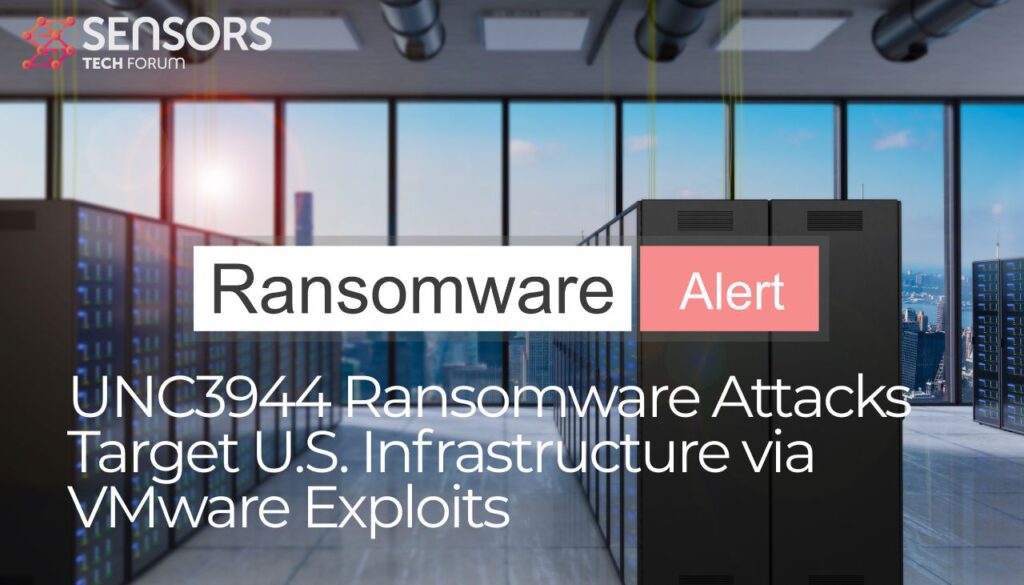A financially driven cybercrime group known as UNC3944 has launched a coordinated and highly targeted hacking campaign that ends with ransomware against major U.S. industries, according to a joint report by Google’s Threat Intelligence Group (GTIG) and cybersecurity firm Mandiant.
The group, which overlaps with aliases like “0ktapus” and “Scattered Spider,” has set its sights on the retail, airline, and insurance sectors in a wave of attacks that bypass traditional security tools and exploit human error.
In these attacks, UNC3944 has weaponized social engineering, impersonation, and insider-like reconnaissance to breach enterprise networks, focusing specifically on companies using VMware’s virtualization platform, vSphere.

UNC3944 Ransomware Attacks Rely on A Human-Centric Playbook
At the heart of the group’s strategy is a simple but potent tactic: phone calls. Investigators say UNC3944 operatives cold-call IT help desks, impersonating employees whose identities they’ve pieced together from past data breaches. Armed with convincing details, they persuade support staff to reset login credentials, giving them initial access to company systems.
From there, the attackers don’t move randomly. They conduct careful internal surveillance, combing through internal documentation, SharePoint files, and corporate wikis to identify administrator accounts and privileged access groups, especially those linked to VMware management. In a second call, they impersonate these high-value users to gain administrative control.
This process effectively sidesteps many technical defenses, leveraging human behavior and weak authentication protocols rather than breaking code.
From Help Desk to Hypervisor
Once inside, the group pivots toward the crown jewels: the VMware infrastructure that powers much of a company’s virtual server environment.
Using stolen credentials, they gain access to Active Directory, then move laterally into vSphere, VMware’s virtualization platform that manages entire fleets of virtual machines (VMs). They’re not planting ransomware in operating systems; instead, they’re targeting the VMware hypervisor layer itself, where they can shut down or encrypt entire environments with minimal detection.
Their methods are especially dangerous because they exploit tools and processes that administrators themselves use—what security experts call a “living-off-the-land” approach. By mimicking normal administrative activity, the attackers evade many traditional security systems like antivirus and endpoint detection software, which often lack visibility into VMware’s back-end systems.
Why These UNC3944 Ransomware Attacks Are So Hard to Spot
Part of what makes these intrusions difficult to detect is how VMware logs activity. The system relies on multiple layers of logging—from centralized vCenter logs that track administrative actions, to lower-level ESXi host logs and audit files.
Mandiant’s report breaks this down:
- vCenter Logs offer structured events, like logins or VM shutdowns. These are ideal for alerting and forensic analysis if they’re forwarded to a centralized system like a SIEM (Security Information and Event Management) platform.
- ESXi Logs, stored locally, provide detailed insights into how the host itself is behaving—like performance issues, hardware failures, or service activity.
- ESXi Audit Logs, which are not enabled by default, offer the most precise view of a potential breach: logging who logged in, what they did, and whether commands (like launching malware) succeeded or failed.
Mandiant recommends organizations collect all three types of logs to get a full picture of what’s happening across their virtual environments.
Anatomy of an UNC3944 Ransomware Attack
According to the report, UNC3944’s attacks typically follow a five-step playbook:
- Initial Compromise – Gain access via help desk impersonation.
- Internal Reconnaissance – Scan company resources for admin accounts and access credentials.
- Privilege Escalation – Target and impersonate privileged users, gaining high-level access.
- VMware Takeover – Use Active Directory access to reach the vSphere environment and control or disable virtual servers.
- Extortion or Ransom – Encrypt systems or steal sensitive data for financial gain.
These are not smash-and-grab attacks. Each move is deliberate, often taking place over days or weeks, with the goal of obtaining total control over an organization’s IT infrastructure.
What’s at Stake
UNC3944’s methods have already forced several companies to shut down virtual operations, causing disruptions across retail transactions, airline scheduling, and insurance processing.
The use of vSphere as a ransomware delivery system is especially worrying, explained a senior Mandiant analyst. Many companies still don’t realize that their virtualization layer is a blind spot. Without the right logging and visibility, attackers can operate undetected until it’s too late.
Mitigation Measures
Security experts advise organizations to take several urgent steps:
- Ban phone-based password resets for admin accounts. Require in-person or multi-factor authentication for any high-privilege reset requests.
- Enable and monitor VMware audit logs. These provide crucial insights into exactly what a threat actor did once inside.
- Lock down documentation and access to password managers. Threat actors are increasingly searching internal files for operational blueprints and admin secrets.
- Monitor sensitive group changes. Any update to admin groups like “vSphere Admins” or “Domain Admins” should trigger alerts and be investigated immediately.
Final Thoughts
Social engineering, combined with a deep knowledge of enterprise IT infrastructure, is giving groups like UNC3944 unprecedented access and control. Mandiant warns that similar campaigns are likely to continue across industries that rely heavily on virtual infrastructure, and where help desks remain a weak link in the security chain.




too much power granted to too many or too poorly trained users [again]
If your employee does not adblock at home or on his personal devices stop trusting him